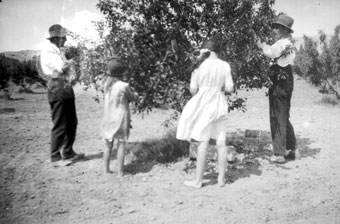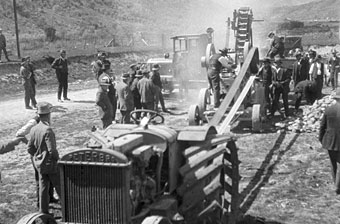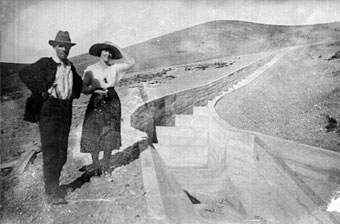Our History
When McIntosh Orchard was established in 1881, the gold fever that had swept the Central Otago region in the 1860s was all but over. There were still those in search of the elusive metal however, and this would be the catalyst for the very beginnings of a proud McIntosh family farming tradition.
James Muir, who would later become Daniel McIntosh's father-in-law, sold his gold claim in Conroys Gully, just four kilometres from the orchard and where Conroy's Dam stands today, to Chinese miners. This sale financed the purchase of the existing orchard location, a parcel of land released from Earnscleugh Station, the founding high country station of the area. In 1900, Daniel McIntosh married Marion Muir, but it would be another ten years before the first fruit trees were planted on the property in 1910.
The environment was harsh, boasting some of the hottest and coldest temperatures recorded in all of New Zealand. It would be these extremes that the success of summerfruit production in Central Otago would later be attributed. However initially, with the lack of a reliable water supply, cropping and sheep farming were the most viable use of the newly acquired land.
In subsequent years, having learnt to better utilise the Omeo Creek that ran through their property, the establishment of a small orchard of mixed summerfruit trees not far from where the main house stands today was realised. In 1923, with the creation of the Fraser Dam and access to a reliable water supply, the orchard was expanded further. Cherries, the first trees having arrived from Australia, were planted in the 1960s and McIntosh Orchard would come to represent ten percent of the local supply of cherries for export.
Prior to 1980, harsh spring frosts were a challenge yet to be overcome and limited any opportunity for larger scale production. Frost protection consisted of frost pots (burning pots of oil), and at times, oil was also burnt in between the rows of trees, all in the hope of increasing the temperature of the cold air that clung to the trees and threatened the tender buds and emerging fruit.
The development of overhead water sprinkling systems in the 1980s as a means to combat frost revolutionised production. It had been found that as water turns to ice, it releases heat and therefore not only could it help raise freezing temperatures, it also created a protective shell over the buds and developing fruit. Growers had already begun to build dams and store water on their properties, utilising their allocations from the Fraser Dam, now they were better able to restrict the impact of damaging spring frosts, and had the confidence to expand their orchards.
Over the years Central Otago had developed a reputation for growing superior summerfruit. The completion of the Clyde Dam in 1993 provided further incentive to support this burgeoning industry. The Earnscleugh Irrigation Company was formed and obtained water rights for the area. The supply of water, a most precious resource for the production of fruit, was now more stable and reliable than ever before.
Research and Development improved growing techniques and introduced new varieties. Technology offered to ease the burden of more laborious practices of the past. However despite all of these developments, it was and still is the growing intelligence accumulated over generations that is the biggest asset of McIntosh Orchard.
Today McIntosh Orchard has three generations of the family living and working on the property. We see the family tradition and legacy as one of the orchards strengths.
McIntosh Orchard will continue to "capture sunlight in an edible form", delighting consumers both in New Zealand and around the world with an exceptional eating experience.



